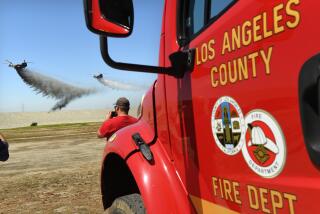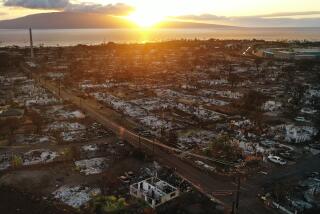Charity funds for tragedy victims getting trickier
Within hours of the April 15 Boston Marathon bombing, even as the tragedy was unfolding on live television, the machinery of victim fundraising had already started to hum.
By 5 p.m. April 16 — less than 26 hours after bomb blasts killed three people and injured more than 260 — Massachusetts Gov. Deval Patrick, Boston Mayor Thomas M. Menino and a handful of business leaders had crafted the One Fund Boston.
With “rabbit out of the hat” speed, the fund already had a post office box, bank account, website and articles of incorporation set for filing. It even had a spiffy logo, designed to look like a race bib.
Planners set a goal of raising $10 million in 90 days. They topped it in 44 hours. The fund is now at $38 million, with the first disbursements to victims scheduled to be sent this month.
In those whirlwind early hours of the Boston fund, planners also wrestled with the fear that it would fall prey to the who-gets-what controversies that have plagued other funds created for victims of violence.
“The American public has seen a number of examples of this incredible outpouring of generosity that they intended to go to the victims but then found out that is not what happened,” said James Gallagher, executive vice president of John Hancock Financial Services and president of the One Fund Boston.
Organizers decided early on that the only way to keep the public’s trust was to commit 100% of donations to victims, he said.
Tension has been growing between the old and new ways of doing victim charity in this country, said Ken Berger, chief executive and president of Charity Navigator, a watchdog group.
It is a conflict fueled, in part, by technology and unclear expectations.
Today’s donors watch tragedies in real time on TV or online. They feel instantly connected with victims and can fire off donations simply by pressing “send” on a smartphone or computer.
Donors may assume their money goes directly to those whose stories they see on the news or hear in fundraising pleas, but as Berger warns, that is not always the case.
After the shooting massacres at Virginia Tech, in Aurora, Colo., and in Newtown, Conn., victim funds were initially administered by traditional charities and well-established foundations. Communities and local leaders turned to those groups because they had the experience and infrastructure to handle large sums of money.
Yet in each case, those handling the funds came under fire from victims who said the money raised on their behalf was misappropriated, and in some cases withheld.
At issue is a philosophical disagreement about what a victim fund can and should do, Berger said.
Long-standing charities, such as United Way and American Red Cross, have their own protocols and priorities and are more accustomed to helping communities recover from natural disasters, such as tornadoes and floods, than from man-made violence.
Such groups also tend to take the long view and earmark a portion of the donations for other nonprofits that can help entire communities heal now and in the future.
“At the United Way, we typically don’t give directly to people,” said Kim Morgan, CEO of United Way of Western Connecticut, which created the Sandy Hook School Support Fund after the mass shooting Dec. 14 in Newtown.
Her agency has always been community-oriented. Organizers deliberately avoided the word “victim” in the fund name because it was never intended that all donated money go solely to victims.
Morgan said the $11 million raised will be turned over to a new entity, the Newtown-Sandy Hook Community Foundation, which will decide how it should be distributed. The foundation first suggested giving $4.4 million to the families and then upped the amount to $7.7 million.
Morgan added that mental health problems after tragedies can take months or even years to surface, so it is important to preserve funds so area nonprofits can minister to everyone touched by the tragedy.
But the pace and vagueness have infuriated those who lost loved ones. They bristle at suggestions they are out to profit on the tragedy — they say donors are being duped.
“They see the pictures and hear the stories. That’s why they are donating. They think the money is going to go to the victims,” said Cristina Hassinger, whose mother, Dawn Hochsprung, was the Sandy Hook principal killed trying to save others.
In the more than five months since that shooting, family members of those killed or wounded, or children traumatized in classrooms, have yet to see a dime of the millions donated, she said.
The Connecticut attorney general stepped in to review how the funds were being handled and said the foundation had acted reasonably in deciding how much to distribute to victims.
After the movie theater massacre in Aurora, Colo., last summer, a similar problem surfaced. Family members of those killed or wounded criticized Community First, a local foundation administering the Aurora Victim Relief Fund. Victims said the foundation used their loved ones’ pictures to collect $5 million but then sat on the money.
Families got only $5,000 a piece from an initial disbursement in August, with a promise of more later. In the meantime, a group of local nonprofits received $100,000. Like United Way in Connecticut, Community First said it was never set up to disburse money directly to individuals and would funnel funds to local nonprofits that could help the entire community, as well as victims.
Public outrage was swift. Colorado Gov. John Hickenlooper, a Democrat, asked Washington, D.C., attorney Kenneth Feinberg to intervene and take over the distribution plan. Within weeks, Feinberg had established a payment protocol and checks were cut.
His plan followed a strict formula that carved out shares of the fund based on severity of injuries. He did not factor in long-term or still undiagnosed health problems. Families of the 12 who died and those with permanent brain injury got $220,000 each. The remainder of the fund was divided among victims based on the lengths of their hospital stays.
Feinberg, who has also been tapped to oversee the One Fund Boston distribution plan, has become the nation’s go-to guy when it comes to overseeing and crafting distribution plans for victims.
He handled victim payouts after the Sept. 11 terrorist attacks, the BP oil spill and the Penn State child sexual abuse scandal. He modeled the Aurora plan after the one he crafted for Virginia Tech victims when that fund, too, came under fire for how the money was to be used.
“Prompt distribution is extremely important to people who are emotionally vulnerable,” Feinberg said in an interview last fall.
In handling the Boston fund, Feinberg uses the same index of suffering, with priority going to families of those who died and victims who suffered double amputations or brain injuries. The rest will be distributed based on the severity of injuries and the length of time in the hospital.
Feinberg’s quick-in, quick-out strategy is effective, but charity watchers warn it is not perfect. Berger said traditional charities may have been “tone deaf” to donor wishes, but if a fund is drained too quickly, there is nothing to fall back on if needs show up later, such as post-traumatic stress disorder or hidden health problems. Instant funds, without some established vetting involved, also heighten the risk of fraud, Berger said.
He would like to see a hybrid approach, taking the best of both worlds. To that end, he is intrigued with a new concept that is gaining traction: the National Compassion Fund.
The idea, backed by a coalition of family members of tragedies from Columbine to Sandy Hook, seeks to put in place a centralized infrastructure that could quickly create a safe, specialized charity fund. Administrative costs would be picked up by a partner or corporate sponsor so all the money raised would go to victims.
Such a structure would eliminate the need to reinvent the wheel every time, said Anita Busch, a relative of Micayla Medek, who died in Aurora.
Although not all the details have been finalized, the National Center for Victims of Crime has expressed a strong interest in overseeing the fund.
These are all uncharted waters, admitted Gallagher at the One Fund Boston. Even as his efforts seem to be the wave of the future, he sees value in the ways of the past. The fund will distribute all of the $38 million currently in the pipeline to victims but will keep the fundraising efforts open for later needs.
The most heartening thing is the staggering generosity of the American public time after time. “Whatever evil occurs,” he said, “the goodness of community always comes out in far larger numbers.”
More to Read
Sign up for Essential California
The most important California stories and recommendations in your inbox every morning.
You may occasionally receive promotional content from the Los Angeles Times.










